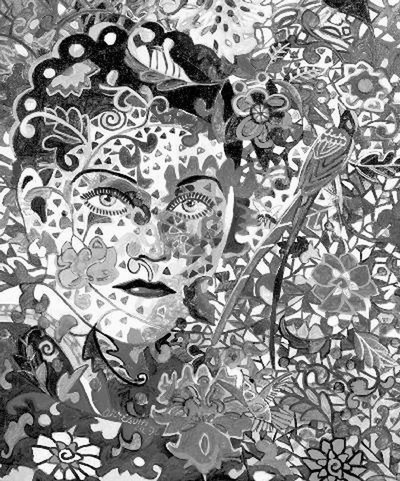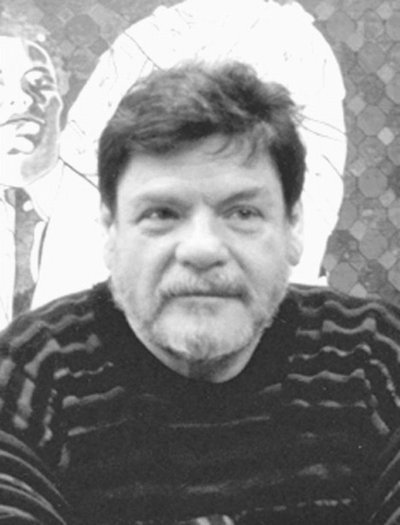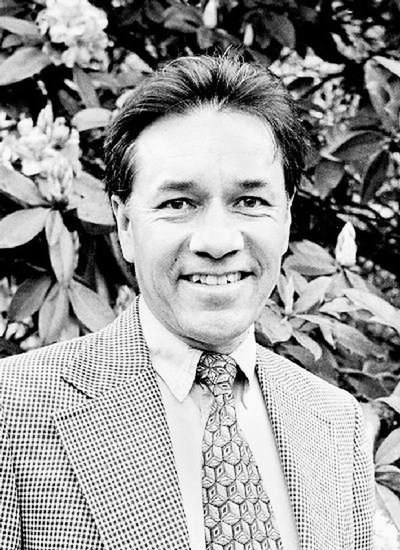March 14, 2002
Labor of Love: Professor wrote book on ‘extraordinary painter’
Lauro Flores just wanted to see that a deserving artist got more recognition. That’s all the professor of American Ethnic Studies had in mind when he approached the University of Washington Press two and a half years ago with his idea for a book on Alfredo Arreguín.
“I think he’s an extraordinary painter,” Flores says of Arreguín. “And just the body of work that he has amassed deserves a full-length treatment.”
Now Flores’ book, Alfredo Arreguín: Patterns of Dreams and Nature, has been published. Later this month, there will be a retrospective of Arreguín’s work at the Bellevue Art Museum, a collaborator on the project. And another collaborator is El Colegio de Michoacán, in Mexico, where the book will get wider distribution than the UW Press alone can give it.
For Flores, it’s a satisfying way to conclude what he has termed a “labor of love,” worked on mostly in his free time while he continued to teach classes. The book includes more than 100 photos and illustrations, Most of them reproductions of Arreguín’s paintings.
It should be a book of keen interest on campus because Arreguín earned both his bachelor’s and master’s degrees at the UW and has lived in Seattle for more than 40 years. The subjects of his paintings include such Northwest icons as poet Tess Gallagher, her late husband, short story writer Raymond Carver, and the environmental activist Hazel Wolf, who died last year at age 101.
But the most typical subject of his paintings is the natural world, especially the rain forest that he came in contact with while growing up in Mexico. An early life in Mexico is just one of the things Arreguín and Flores have in common. Both spent important years of their childhood in the city of Morelia, both were born of single mothers and both came to this country as adolescents.
“Once, when I was talking to Alfredo, he asked me where I was from,” Flores says. “I told him I grew up in Morelia, but that my family on my mother’s side is from this tiny little village, Las Canoas. When I said that his eyes got round, his jaw dropped, and he said ‘What?!’ I repeated, ‘Las Canoas.’ And he said ‘Oh my God, I can’t believe it.'”
It turned out that Las Canoas was the site of a very important experience in Arreguín’s life. He lived with his grandparents at the time and his grandfather was setting out on a business trip. The 5-year-old Alfredo was taken to the train station to say goodbye and he began to cry, so his grandfather impulsively took him along. It was on this trip that Arreguín went to Las Canoas and had his first direct contact with the forest.
“The thick vegetation, which scarcely allowed them to see the village from the top of the hill when they first arrived, made a powerful impression on the boy’s mind,” Flores writes in the book. He goes on to describe how the local trees, insects and birds were things that stuck with Arreguín and later appeared in his paintings.
It was a spooky coincidence for Flores, who wondered if, while on that trip, Alfredo and his grandfather had met his relatives before he was born. The intersection of their lives only strengthened Flores’ resolve to create a book that would do justice to Arreguín’s work.
A scholar formally trained in literature, Flores might seem an unlikely candidate to do a book about an artist, but he says he has had a passion for art since junior high school, when he began to do a little drawing and painting himself. And he is not a newcomer to this aspect of cultural studies either. Over the years his research has become increasingly interdisciplinary. Among other things, he has been the editor of two journals that included both art and literature, and was one of the organizers of a 1984 traveling exhibit of Northwest Latino art that included work by Arreguín.
And as he studied Arreguín, Flores began to see a parallel between his work and that of the poet Pablo Neruda, who was also influenced by the rain forest in his native Chile. So as part of his research, he re-read Neruda’s work and translated some of his poems even as he pored over about 3,000 Arreguín paintings.
The end result is a bilingual book (Flores wrote it in both English and Spanish) that includes some Neruda poems along with the Arreguín paintings. It also includes a foreword by Tess Gallagher, who has been a friend of Arreguín’s for many years, and an afterword by Agustín Jacinto Zavala, a scholar at El Colegio de Michoacán.
“I wanted a collaborative work from the beginning,” Flores says. “And it was through Zavala that El Colegio de Michoacán agreed to be a co-publisher along with the UW Press and the Bellevue Art Museum.”
Flores hopes the joint publication will give Arreguín more exposure in Mexico, where he is mainly known only in his native city of Morelia, and perhaps in Spain as well. The exhibit, which will include more than 60 of Arreguín’s paintings, will be at the Bellevue Art Museum March 23–June 24, and there are plans for it to travel afterward.
“I’m extremely happy to see that this project went beyond what I had imagined in the beginning,” Flores says. “Alfredo spent a good part of his life being a ‘starving artist’ and I’m glad that the book and the exhibit will introduce him to a broader audience.”



